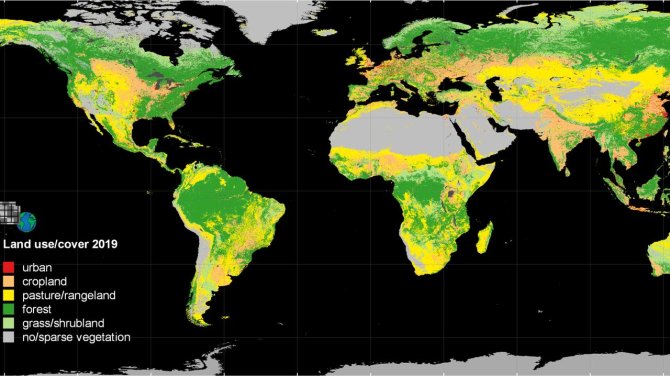
News
Global land use changes are larger than assumed
Changes in land use play an important role in nutrition, climate and biodiversity. Using a new set of maps made up of high-resolution satellite data and statistics, scientists from Wageningen University & Research (WUR) and the Karlsruhe Institute of Technology (KIT), have found that global land use changes are four times as large as previously assumed. The researchers report on their results in the science magazine Nature Communications.
Whether it is deforestation, urban growth, agricultural expansion or afforestation, land use change is multifaceted and has shaped human history. "In order to meet the global challenges of our time, we need to better understand the extent of land use changes and their contribution to climate change, biodiversity, and food production," says Karina Winkler, researcher from the KIT and PhD candidate at WUR. "This is because land use also plays a crucial role in achieving the climate goals under the Paris Agreement."
Satellite data
Researchers have combined various free data to develop a new, high-resolution map set called "HILDA+" (Historic Land Dynamics Assessment +). It uses high-resolution satellite data and land-use statistics to reconstruct global land-use changes and their spatiotemporal patterns between 1960 and 2019. "The main difficulty in our work is dealing with very different data sets," explains Winkler. "For example, when land use maps have different spatial resolution, temporal coverage, or land use classifications, a strategy for harmonization is needed."
Different patterns in the world
The set of maps shows that land-use changes affect nearly one-third of the global land area in just six decades, about four times as much as previously known from long-term analyses.

“The maps show the diversity of land use change patterns worldwide,” said Martin Herold, professor in geo-information science and remote sensing at WUR. In their study, the researchers point to differences between North and South. “For example, in the northern hemisphere, the area of forest has increased over the past sixty years and that of agricultural land has shrunk. The reverse has happened in the southern hemisphere: strong deforestation and an expansion of agricultural land.”
Accelerated land-use
In addition, the rate of land-use change has changed over time. The researchers identify a period of accelerated land-use change from 1960 to about 2005, and a period of decelerated land-use change from about 2006 to 2019. "This trend reversal could be related to an increasing importance of global trade for agricultural production and to the global economic crisis of 2007/2008," Winkler says.
The new land use data could be an improved data basis for climate and Earth system models - and thus contribute to political debates on action strategies for sustainable land use in the future. The data are freely available and can be viewed in an online application.